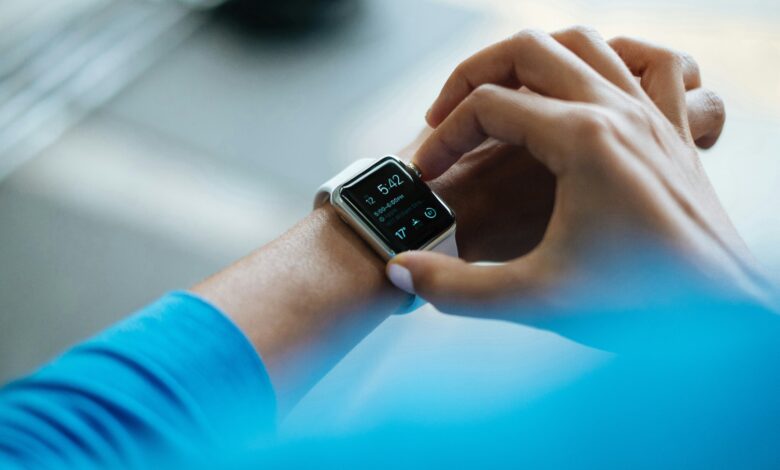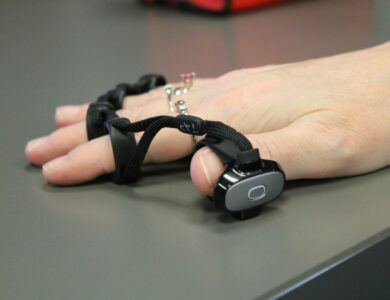
In recent years, Fitness Trackers have become a popular tool for anyone looking to improve their health and fitness. These nifty gadgets, which you can wear on your wrist, provide a wealth of data about your daily activities, helping you stay motivated and on track with your fitness goals. Whether you’re a seasoned athlete or just starting your fitness journey, a Fitness Tracker can be an invaluable tool. In this article, we’ll explore the benefits of Fitness Trackers, the features you should look for, how to get the most out of them, and their future in the fitness world.
1. The Benefits of Using a Fitness Tracker
One of the most compelling reasons to use a Fitness Tracker is the immediate access it provides to your fitness data. These devices can monitor your steps, calories burned, heart rate, sleep patterns, and even stress levels. By providing real-time feedback, a Fitness Tracker helps you understand your current fitness level and areas where you can improve. This constant feedback loop is especially beneficial for those who need a little extra motivation to stay active.
Moreover, many Fitness Trackers come with built-in reminders and alerts. For example, if you’ve been sitting too long, your tracker might prompt you to stand up and move around. This can be a game-changer for people with sedentary jobs, as it encourages more movement throughout the day. Additionally, some trackers offer personalized fitness plans and can adapt their recommendations based on your progress, making it easier to achieve your fitness goals.
2. Key Features to Look for in a Fitness Tracker
When shopping for a Fitness Tracker, it’s essential to consider the features that best suit your needs. While all trackers can count steps, some offer more advanced functionalities. For instance, if you’re a swimmer, you’ll want a waterproof tracker with swim-tracking capabilities. Similarly, runners might prioritize a device with GPS tracking to monitor distance and pace accurately.
Heart rate monitoring is another crucial feature to look for. A Fitness Tracker with a reliable heart rate monitor can provide insights into your cardiovascular health and help you optimize your workouts. Additionally, some trackers offer SpO2 sensors to measure blood oxygen levels, which can be particularly useful for high-altitude training or monitoring overall health.
Battery life is another important consideration. If you’re someone who doesn’t want to charge their device every day, look for a Fitness Tracker with long battery life. Some models can last up to a week on a single charge, making them perfect for those who prefer a more low-maintenance option.
3. Maximizing the Use of Your Fitness Tracker
To get the most out of your Fitness Tracker, it’s essential to use it consistently and take advantage of all its features. Start by setting clear and achievable goals, such as walking a certain number of steps each day or getting a specific amount of sleep. Most Fitness Trackers allow you to set these goals within their companion apps, and they will notify you when you’ve reached them.
Tracking your sleep patterns is another excellent way to utilize your Fitness Tracker. Quality sleep is crucial for overall health, and many trackers can provide detailed insights into your sleep stages, including light, deep, and REM sleep. By understanding your sleep patterns, you can make necessary adjustments to improve your rest and recovery.
Many Fitness Trackers also offer social features, such as the ability to compete with friends or join challenges. This can add a fun and competitive element to your fitness routine, keeping you motivated and engaged. Additionally, syncing your tracker with other health apps, such as MyFitnessPal or Apple Health, can provide a more comprehensive view of your overall wellness.
4. The Future of Fitness Trackers
The technology behind Fitness Trackers is continually evolving, with new features and capabilities being added all the time. One exciting area of development is the integration of artificial intelligence (AI) and machine learning. These technologies can analyze the data collected by your Fitness Tracker and offer personalized recommendations and insights, making it easier to achieve your fitness goals.
Another trend to watch is the growing focus on mental health. While traditional Fitness Trackers have primarily focused on physical metrics, newer models are starting to include features that monitor stress levels and offer mindfulness exercises. This holistic approach recognizes the importance of mental well-being as part of overall health.
Wearable technology is also becoming more fashionable and versatile. Many companies are designing Fitness Trackers that look like traditional watches or jewelry, making them more appealing for everyday wear. This blend of fashion and functionality ensures that users can wear their trackers in various settings, from the gym to the office.
Conclusion
In summary, Fitness Trackers have become an essential tool for anyone looking to improve their health and fitness. With a wide range of features, from heart rate monitoring to sleep tracking, these devices offer valuable insights into your daily activities and overall well-being. By choosing the right Fitness Tracker and using it consistently, you can stay motivated, track your progress, and make informed decisions about your health. As technology continues to advance, Fitness Trackers will likely become even more sophisticated, offering new ways to enhance your fitness journey. So, if you haven’t already, now is the perfect time to invest in a Fitness Tracker and take the first step toward a healthier lifestyle.




